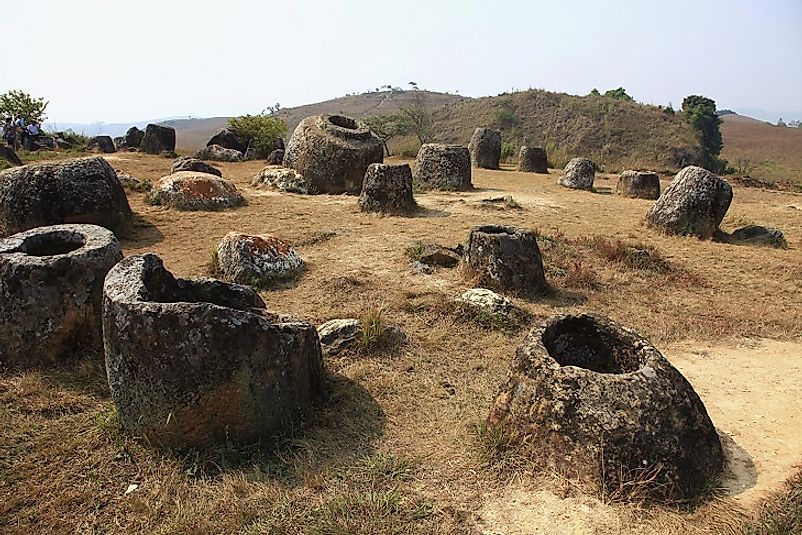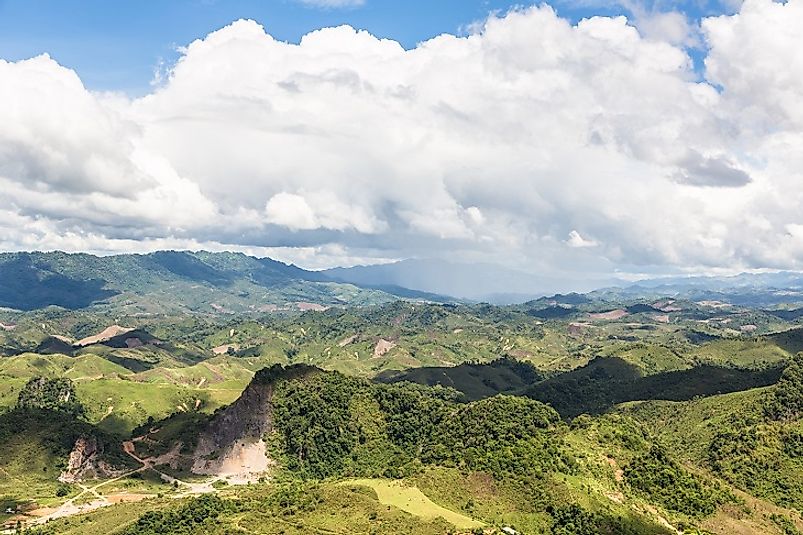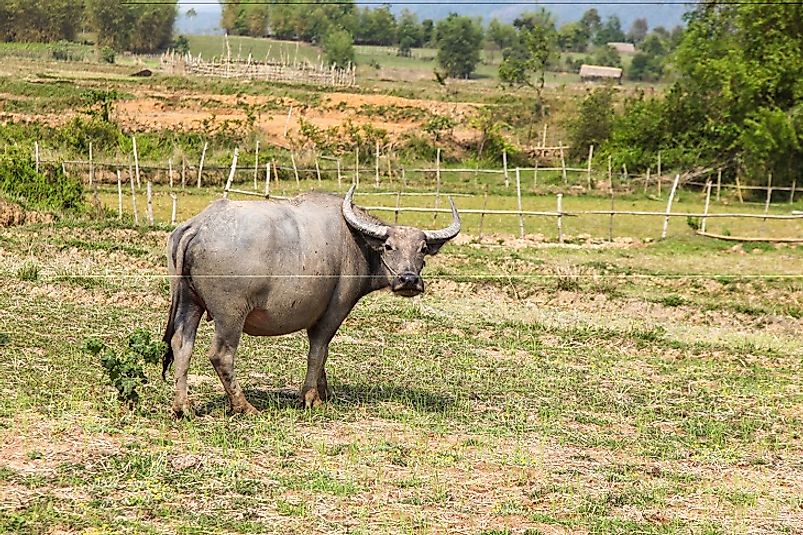The Xiangkhoang Plateau Of Laos

5. Description
This fascinating stretch of land, formerly known as Plateau du Tranninh or as Tran Ninh Plateau, is located in the north of Laos. Xiangkhoang means "Horizontal City" but the area is composed of hills, valleys, rivers, caves, and waterfalls. It is most famous for the "Plain of Jars," the ancient large stone jars which dot the plateau's landscape. The Luang Prabang mountain range separates the plateau from neighboring Thailand, and the Annamite Mountain Range separates it from another neighboring country, Vietnam. Around the town of Xiangkhoang, of the same name as the plateau, there are deposits of alluvial gold, antimony, copper, lead, zinc, iron, ore, coal, and silver. It is thought to be the location for the greatest variety of unexploited minerals in Laos. For those interested in visiting this ancient site, Xiangkhoang can be reached by travelling from the cities of Louangphrabang or Muang Vangviang .
4. Historical Role

Xiangkhoang Plateau is located at the northern end of the Annamese Cordillera, which is the largest mountain range in mainland Southeast Asia. The area served as an important point of ancient trade and the development of local religious customs, both Buddhist and Hindu. From the early 19th Century until 1975, central Xiangkhoang and the Plain of Jars was the site of recurring battles. Invasions by Chinese raiders plundered the area. The Franco-Siamese treaties of the 1890's placed Xiangkhoang under French colonial rule as part of French Indochina until after World War II. During the Second Indochina War Xiangkhoang suffered heavy aerial bombardments and intense ground battles, the affects of which are still seen and felt today.
3. The Plain of Jars
The Plain of Jars is the main attraction of the plateau region. It consists of thousands of stone jars scattered around the valleys of the Xiangkhoang Plateau. The majority of archaeologists who excavated the area believe these to be ancient funerary vessels. French researcher Madeleine Colani concluded in 1930 that the jars were associated with prehistoric burial practices. Excavation by Lao and Japanese archaeologists has supported this interpretation with the discovery of human remains, burial goods, and ceramics around the jars. The jars are arranged in groups from one to several hundred. More than ninety sites have been identified within the province. The jars vary in height and diameter between one meter and three meters, and were all hewn from rock. Their shape is cylindrical with the bottom always wider than the top. The stone jars are largely without decoration with the exception of a single jar at Site 1, which possesses significant artistic embellishment. The Plain of Jars is believed to have been first occupied during the Iron Age, between 500 BC and AD 500, and is one of the most important archaeological sites from that time period in all of Southeast Asia. This prehistoric archaeological landscape was nominated as a United Nations Educational, Scientific, and Cultural Organization (UNESCO) World Heritage Site. On the 13th of August, 2013, the Laotian government opened a visitors' center at Site 1. The center provides information in English on the history of the Plain of Jars, as well as the modern history of the area during the 1964–1975 conflict.
2. Habitat and Biodiversity

The Encyclopedia Britannica describes the plateau as a "dissected upland of complex geologic structure" in north-central Laos. The plateau is drained mainly by the Ngum and Ngiap rivers to the south and the Khan River to the north. These rivers are all tributaries of the Mekong River. The altitude of an average 3,937 feet (1,200 meters) in Xiangkhoang allows for a comfortable climate that does not lend itself to extremes. Consisting of lovely green hills and valleys, the beautiful landscape is marred by bomb craters. Bamboo and wild banana trees can be found as well as an abundance of geckos, snakes, and frogs. Wild oxen, water buffaloes (pictured), deer, bears, monkeys, tigers, and elephants may also find their way into the region.
1. Environmental Threats and Territorial Disputes
The plateau also has underground limestone and sandstone hills which were once covered with tropical monsoon rain forests, but the farming technique of the local Hmong and Lao-Theung peoples slowly destroyed the forests. Between 1964 and 1973, the Plain of Jars was heavily bombed by the American forces. The large number of bombs that remain undetonated in the area, especially cluster munitions of live ordinance, make the area dangerous for people and animals alike. In fact, it is one of the most contaminated regions of the world due to the many explosives still in the ground. Sightseeing on the Plain of Jars can only be done in professionally cleared areas and on clearly marked paths. One of the government's goals is to encourage the involvement of the local community in the management and conservation of the jar sites. This has seen increasing success in recent years as locals understand the importance of this local treasure and as they become more aware of the potential revenue from tourists. However, tourism has resulted in damage to some of the jars.







